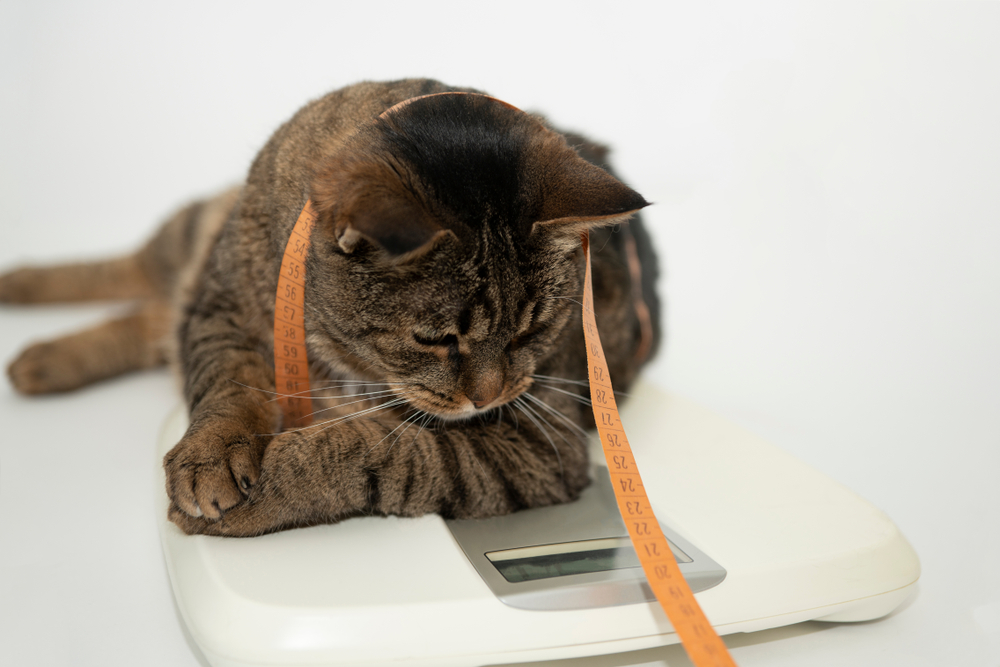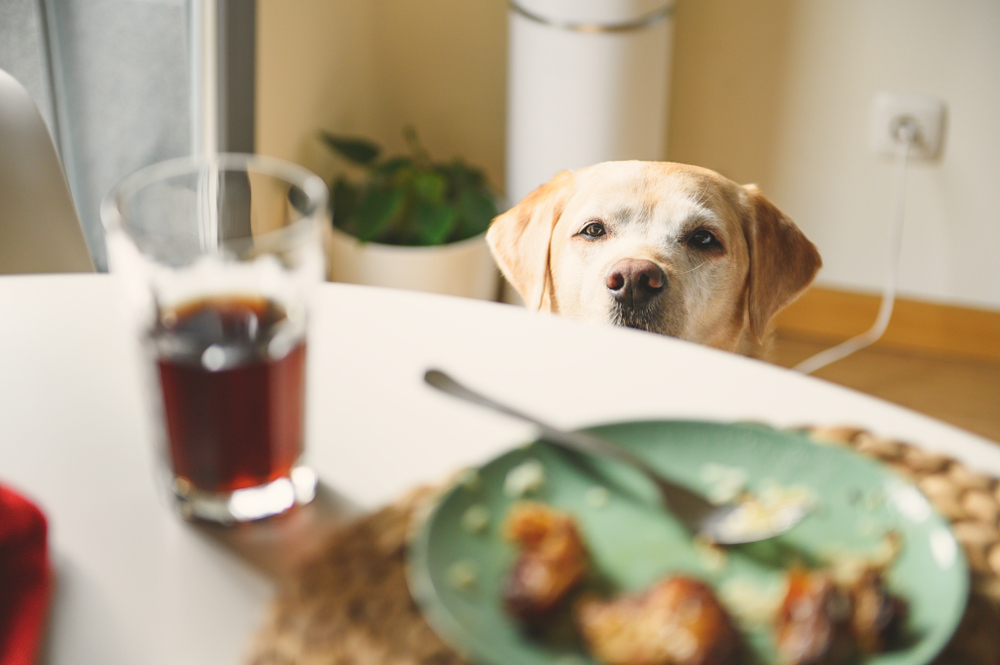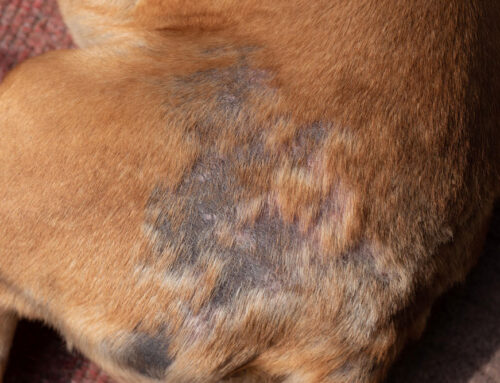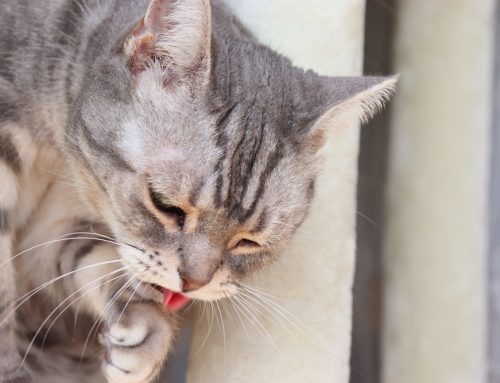Is your furry friend extra fluffy? Some may find overweight dogs and cats endearing, but those additional pounds can subtract years from their life. According to a canine study published in the Journal of Veterinary Internal Medicine, overweight dogs live 2.5 years less than healthy weight dogs. That’s 2.5 years of missing love, laughter, and memories with your four-legged best friend.
Tidmore Veterinary Hospital wants to help you reclaim those 2.5 years with some facts about pet obesity and five fat-fighting strategies for effective pet weight loss.
Pet obesity—an expanding pet health threat
Fat is a necessary nutrient and a concentrated energy source for pets, but once your pet’s body fat requirements are met (i.e., their fat intake exceeds daily use), excess fat is stored in the tissues for future use. While seemingly idle, the fat tissue turns from friend to foe, creating inflammatory reactions that lead to chronic disease. Overweight and obese pets have a heightened risk for many debilitating conditions, including:
- Arthritis
- Cancer
- Heart disease
- Kidney failure
- Respiratory disorders
- Diabetes
- Orthopedic injury (e.g., cranial cruciate ligament rupture)
- Compromised immunity and delayed healing
- Heat stroke
In addition to affecting your pet’s physical health, obesity may contribute to your pet’s emotional health. Persistent pain, impaired or painful mobility, and the need for ongoing handling and veterinary care (e.g., diabetic management) can alter your pet’s emotional responses—increasing anxiety, agitation, stress, and depression.
Is my pet OK? Assessing your pet’s body condition
Your pet’s scale weight isn’t always the best physical condition assessment. Instead, we recommend determining your pet’s body condition score. This easy three-step method involves:
- Palpating the ribs — You should be able to easily feel each rib with only light pressure.
- Looking for a waistline — When viewed from above, your pet should have a defined, hourglass-shaped waist.
- Assessing the silhouette — When viewed from the side, your pet should have a slight tuck or upward abdominal slope.
If your pet’s body condition is less than ideal, don’t be discouraged—take action. Our Tidmore Veterinary Hospital team can evaluate your pet’s health and provide a personalized weight loss plan.
Five steps to a slimmer pet
We humans can’t all be a perfect 10, but with owner dedication and veterinary guidance, your overweight pet can become a perfect 5—the ideal score for dogs and cats. Check out these five strategies for a slimmer, healthier, and longer-lived pet.
#1: Visit the veterinarian — Your pet’s weight and metabolism are influenced by more than calories. Before beginning a weight-loss program, have your pet examined at Tidmore Veterinary Hospital. Our veterinarians will look for conditions such as arthritis pain and joint or soft tissue injury that may have reduced your pet’s mobility and weight gain, and hormone-related disorders, such as hypothyroidism or Cushing’s disease, that can slow metabolism.
#2: Feed your pet based on their caloric needs — Many commercial pet foods contain inappropriately high protein and fat ratios for the average house pet. In addition, most feeding guidelines are based on the daily caloric intake for active, healthy, intact (i.e., not spayed or neutered) dogs and cats—not the average indoor or already-overweight pet. This combination results in chronically overfed pets.
Use an online dog or cat calorie calculator—or ask your veterinarian—to calculate your pet’s required daily caloric intake and the exact portion needed at each meal. Our team can also review your pet’s current diet to determine if your pet could benefit from a formula or brand change.

#3: Discover new ways to get your pet moving — Physical activity is critical for your pet’s health and wellbeing. But, motivating overweight pets can be a challenge. One strategy is rearranging their environment or daily routine to increase their daily mobility. This could include:
- Using a food dispensing toy — Replace your pet’s boring bowl with a motion-activated food toy. These puzzles encourage your pet to paw, chase, and pounce to access the hidden kibble.
- Thinking vertically — Traditional cat trees may be inaccessible for out-of-shape or overweight cats. Instead, provide cat furniture that includes ramps and steps, so your feline can safely reach new heights.
- Encouraging instinctive behavior — Cats and dogs naturally love to chase small “prey,” so look for toys that create this erratic movement (e.g., feather wands for cats, flirt poles for dogs). Keep the toy low to prevent jumping—which can be hard on your pet’s joints—and limit play sessions to a few minutes.
#4: Replace your pet’s treats with healthy alternatives — Treats are a great way to bond with your pet and reward good behavior, but they should never comprise more than 10% of your pet’s daily calorie intake. Replace commercial pet treats, which are often high in calories and artificial ingredients, with low or no-calorie substitutes, such as:
- Lean meat
- Plain air-popped popcorn (i.e., no salt or butter)
- Carrots
- Apple slices
- Blueberries
- Peas
- Non-food rewards (e.g., petting, playing, taking a walk or car ride)
#5: Get healthy together—team up with your pet — Human weight loss is more effective with a partner, and it’s no different for our pets. Rather than measuring pounds, set activity-based goals, such as participating in a one mile or 5k walk, joining a dog training class, or using activity trackers to set customized goals based on steps taken, active minutes, or calories burned.
Don’t let extra weight reduce your pet’s quality—or quantity—of life. Help your dog or cat shed those extra pounds by scheduling an appointment at Tidmore Veterinary Hospital.








Leave A Comment